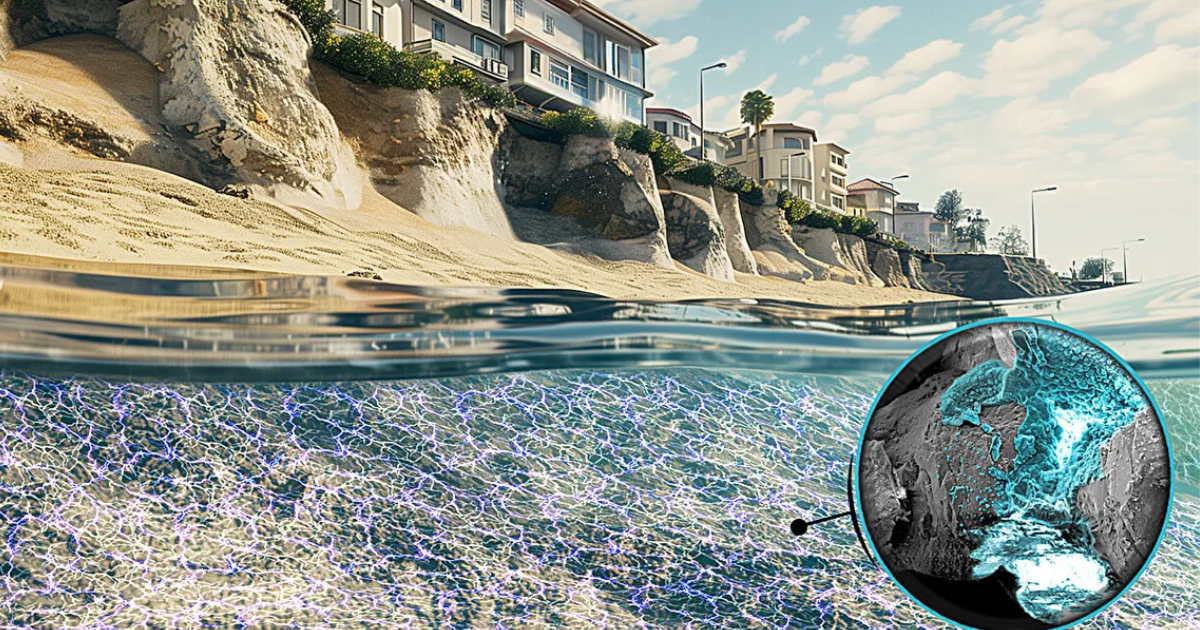
Climate change has caused a lot of problems over the years, and as much as we wish it would be stopped in its tracks, that is almost certainly not the case. This is the inspiration for research into ways to limit its impact on humans and the environment around us.
One of the most serious threats to as much as 40% of the world’s population (those who live near ocean coastlines) is erosion. As the sea levels rise and hurricanes and other storms become more severe, erosion is pulling huge amounts of sand and rocks out to sea.
This is a big threat to homes and other infrastructure that has been built along the sea.
Some areas have been able to construct large seawalls out of concrete, steel, and other materials. While this is effective, it is also very expensive. They can also be very disruptive to the sea in the area. On top of that, building these types of structures releases a lot of greenhouse gasses, which almost makes it counterproductive.
Dr. Alessandro Rotta Loria of Northwestern University might have found an effective way to deal with this issue at a fraction of the cost, and without having negative impacts on the environment.
It has long been known that when lightning strikes sand on the beach, it turns to rock. What Dr. Rotta Loria found, however, was that it takes far less electricity than a bolt of lightning to harden wet sand, thanks largely to the minerals present in the seawater.
Just 2-3 volts of electricity can cause a chemical reaction that makes calcium carbonite, the study found. This is the mineral found in corals, seashells, and limestone. For an even harder material, more electricity can be used. The study had a surprising find that with a modest amount of electricity, hydro magnesite can be produced. This is a component that is also found in hard stalactites and stalagmites.
In a statement, Dr. Rotta Loria said:
“After being treated, the sand looks like a rock. It is still and solid, instead of granular and incohesive. The minerals themselves are much stronger than concrete, so the resulting sand could become as strong and solid as a sea wall.”
Solidifying the sand around homes and other infrastructure is a great way to prevent erosion and protect the people living in and around the regions near the rising oceans.
Dr. Rotta Loria went on to talk about the importance of this option:
“Over 40 percent of the world’s population lives in coastal areas. Because of climate change and sea-level rise, erosion is an enormous threat to these communities. Through the disintegration of infrastructure and loss of land, erosion causes billions of dollars in damage per year worldwide. Current approaches to mitigate erosion involve building protection structures or injecting external binders into the subsurface.”
What is particularly great about this option is that if people find a way to reverse climate change, the hardened sand can be easily reversed back to normal. In addition, this same process can be used on existing seawalls and other infrastructure to significantly extend its life.
The study is published in Communications Earth & Environment.
This may just be the solution to eroding beaches around the world.
If you thought that was interesting, you might like to read a story that reveals Earth’s priciest precious metal isn’t gold or platinum and costs over $10,000 an ounce!